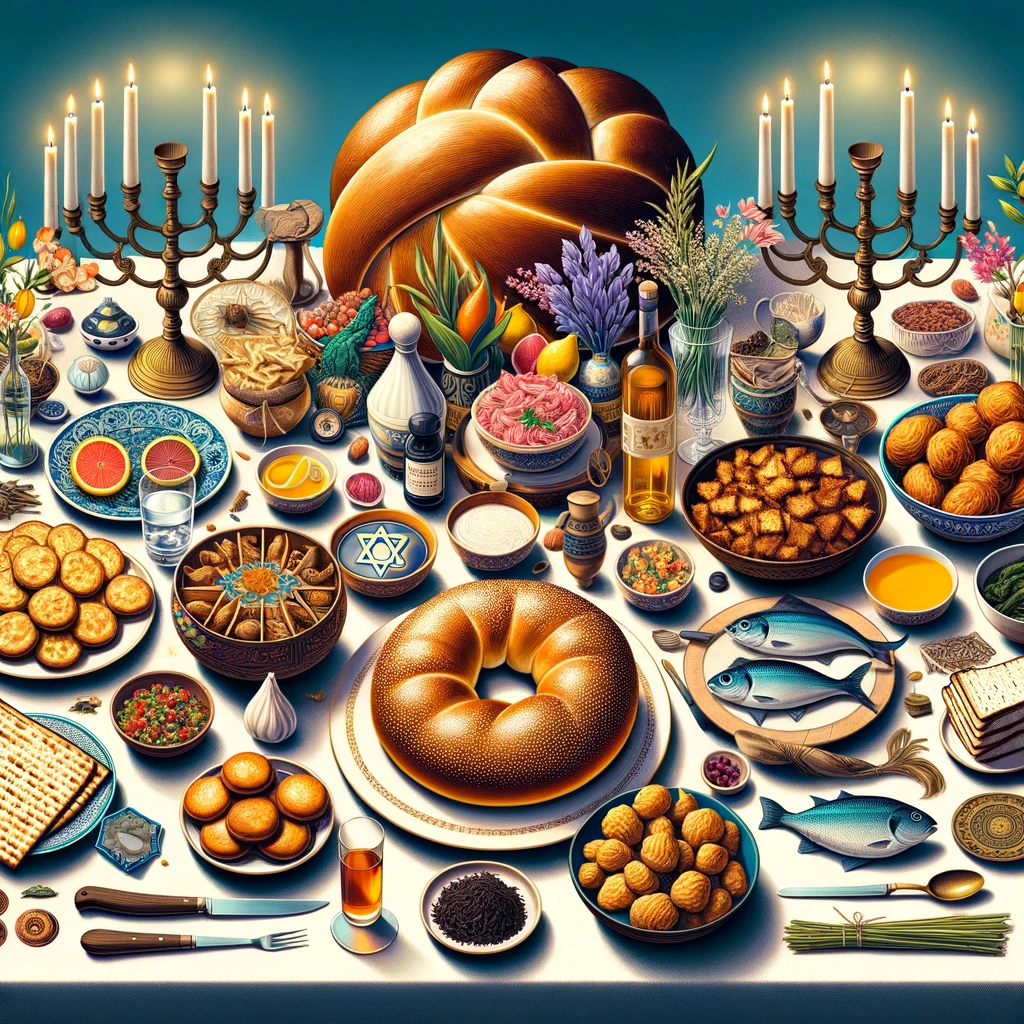
The round challah, traditionally baked for Rosh Hashanah, symbolizes the cyclical nature of life and the year. Its circular shape is a reminder of the ongoing cycle of seasons and the opportunity for renewal that the Jewish New Year brings.
Matzah, the unleavened bread eaten during Passover, symbolizes both the Israelites’ affliction in slavery and their haste in fleeing Egypt. Its simplicity reminds us of humility and the ability to find freedom, even in constraints.
Fried foods like latkes (potato pancakes) and sufganiyot (jelly doughnuts) are eaten during Hanukkah to commemorate the miracle of the Temple’s menorah burning for eight days on a single day’s supply of oil. They celebrate the triumph of light over darkness and the resilience of the Jewish spirit.
Charoset, a sweet paste made of fruits and nuts, is eaten at the Passover Seder to symbolize the mortar used by the Israelite slaves to build the pyramids in Egypt. Its sweetness contrasts with the bitter herbs, reminding us of the hope and endurance that sustained the Jewish people through hardship.
Fish, often served at Rosh Hashanah and other celebrations, symbolizes fertility and abundance. With their eyes always open, fish also represent knowledge and the ever-watchful eye of God.
The bitter herbs (maror) consumed during the Passover Seder symbolize the bitterness of slavery and oppression. Eating maror is a tactile reminder of the hardships endured by the ancestors and the importance of empathy and liberation.
Jewish cuisine serves as a rich tapestry of cultural expression, with each dish offering a window into the collective memory, values, and aspirations of the Jewish people. Through the secret language of food, we’re invited to taste and remember, to celebrate and reflect. As we uncover the symbols and stories baked, cooked, and fried into our favorite dishes, we connect more deeply with our heritage and with each other.
For more insights into the fascinating world of Jewish culinary traditions, visit our blog for stories, recipes, and the meanings behind the meals we share.